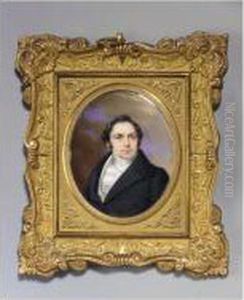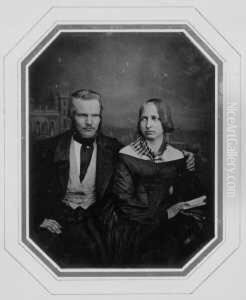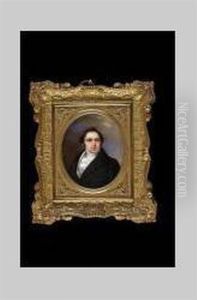Carl Ferdinand Stelzner Paintings
Carl Ferdinand Stelzner was a German photographer and painter born in Hamburg on October 21, 1805. He is regarded as one of the early pioneers in the field of photography in Germany and is particularly noted for his portraiture and daguerreotype works.
Stelzner's initial foray into the arts was through painting, and he trained in this traditional medium before the advent of photography. However, with the invention of the daguerreotype process by Louis Daguerre in 1839, Stelzner's interest shifted towards this revolutionary method of capturing images. He quickly adopted the technique and started to experiment with it, becoming one of the first professional daguerreotypists in Germany.
During the 1840s, Stelzner established himself as a prominent photographer in Hamburg. He had a successful portrait studio where he photographed many notable figures of the time. His portraits were celebrated for their clarity and attention to detail. Stelzner's work was not limited to portraits; he also captured cityscapes and architectural studies, contributing significantly to the visual documentation of historic Hamburg.
In addition to his photographic pursuits, Stelzner was also active in the advancement of photography as an art form. He was involved in various societies and organizations that aimed to promote photography, and he participated in exhibitions, showcasing his work alongside that of his peers.
Stelzner's contributions to photography were recognized during his lifetime, and he received several awards for his work. He remained active as a photographer for many decades, witnessing the transition from the daguerreotype to newer photographic processes. Carl Ferdinand Stelzner died on December 12, 1894, in Hamburg, having left behind a rich legacy of images that offer a window into 19th-century German society and the nascent period of photography.










